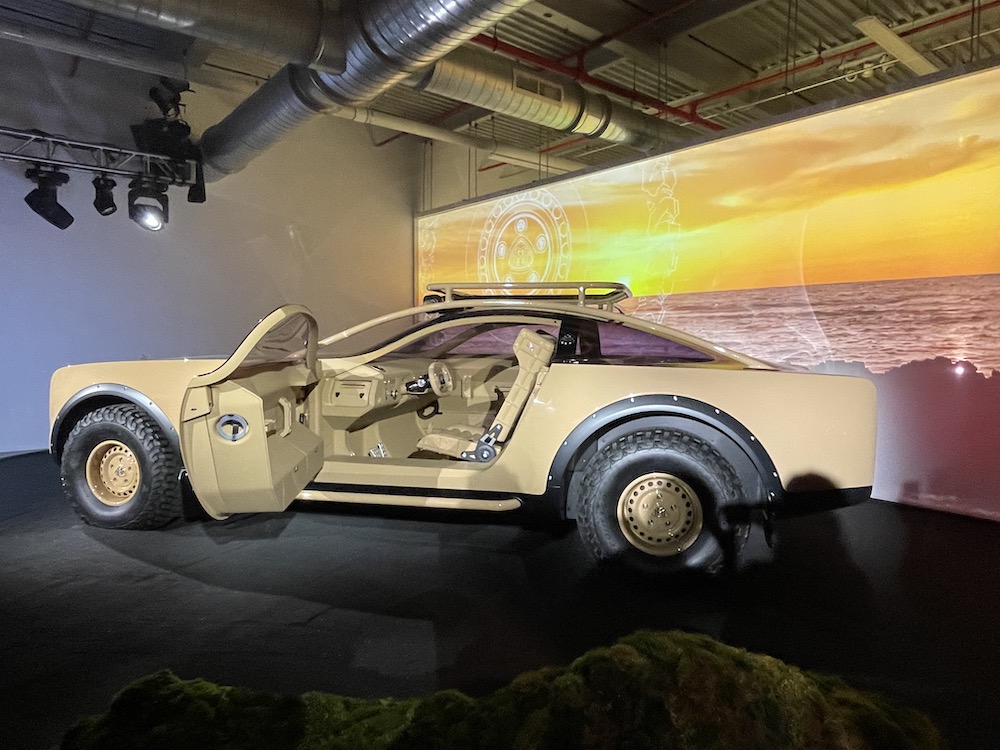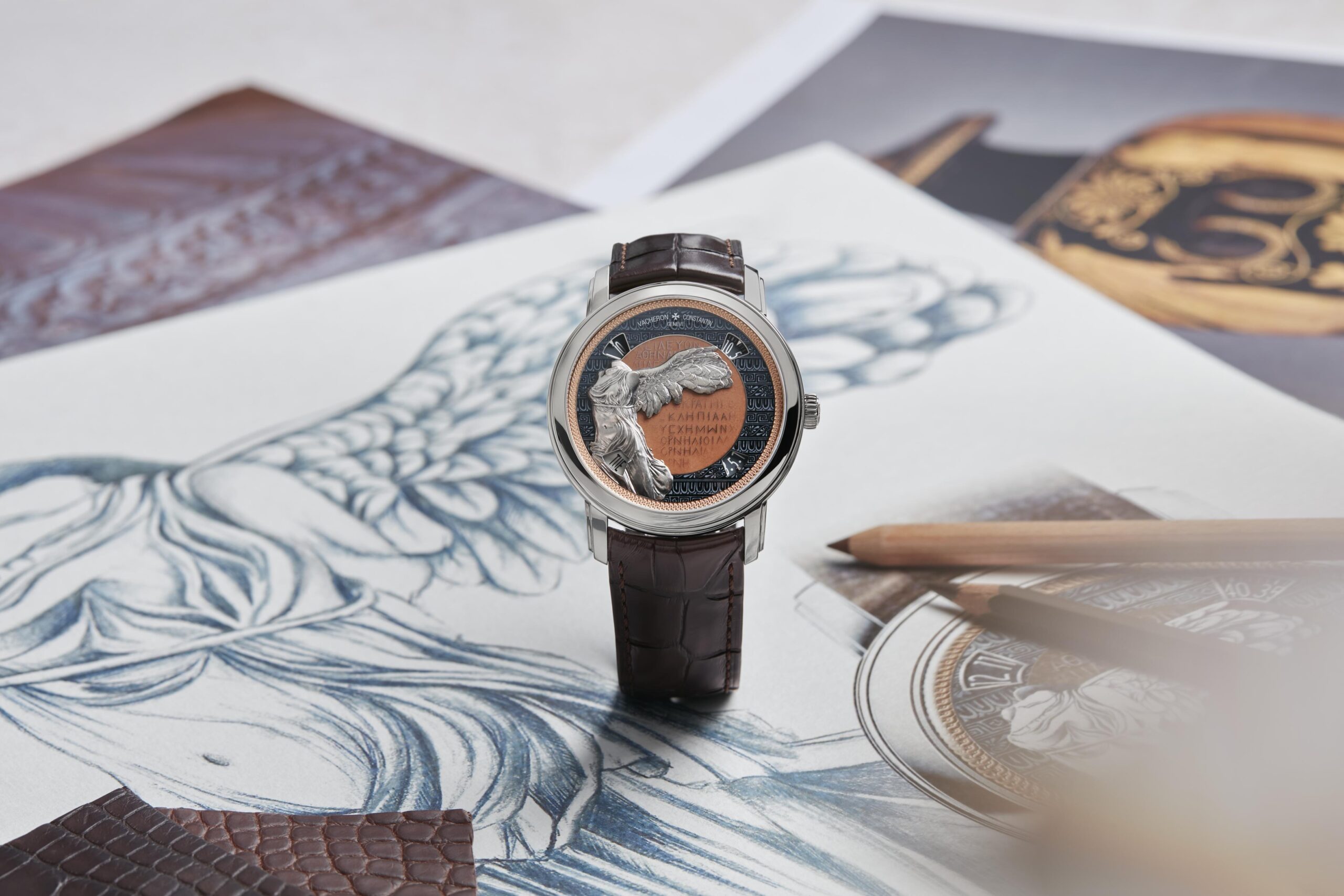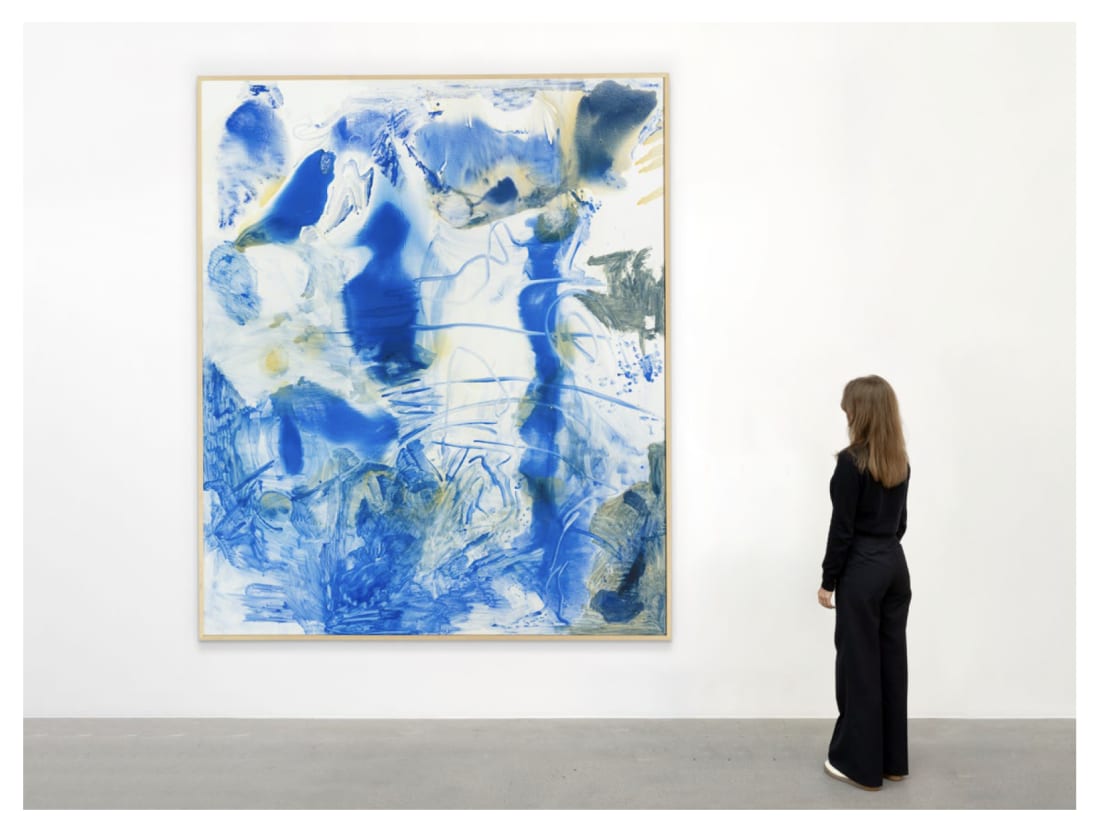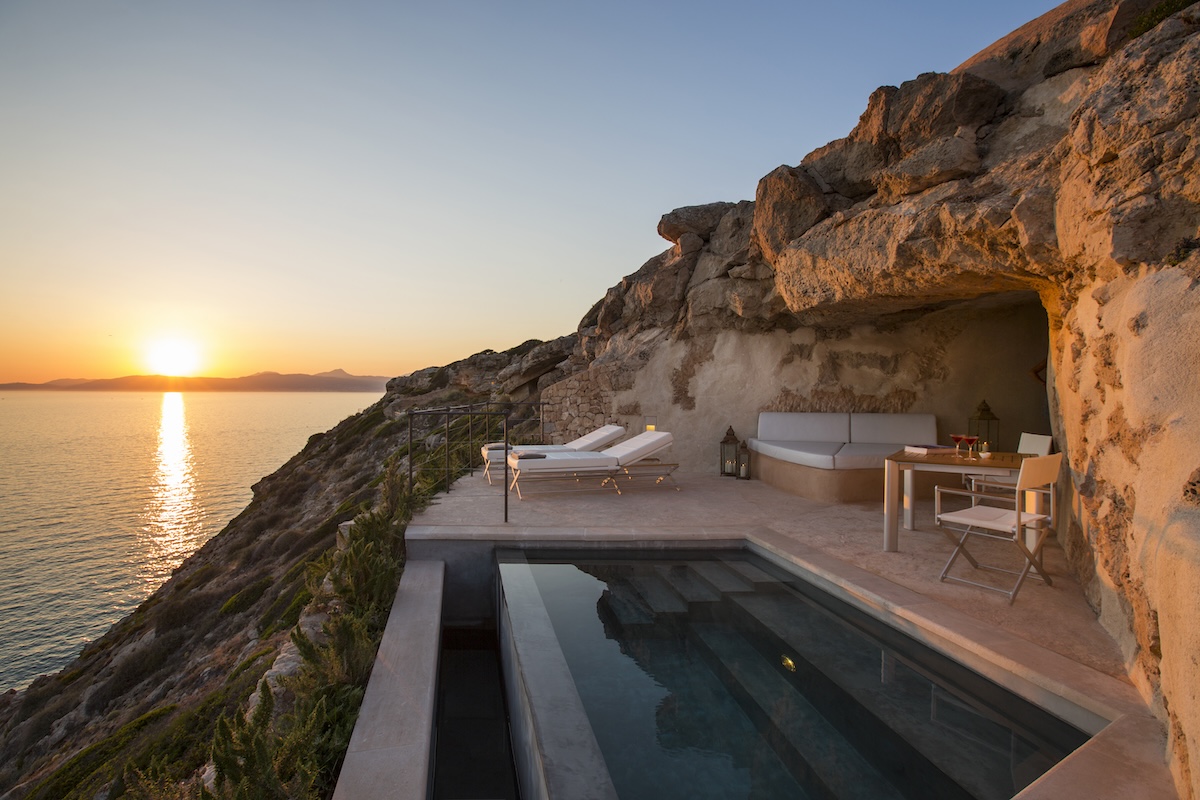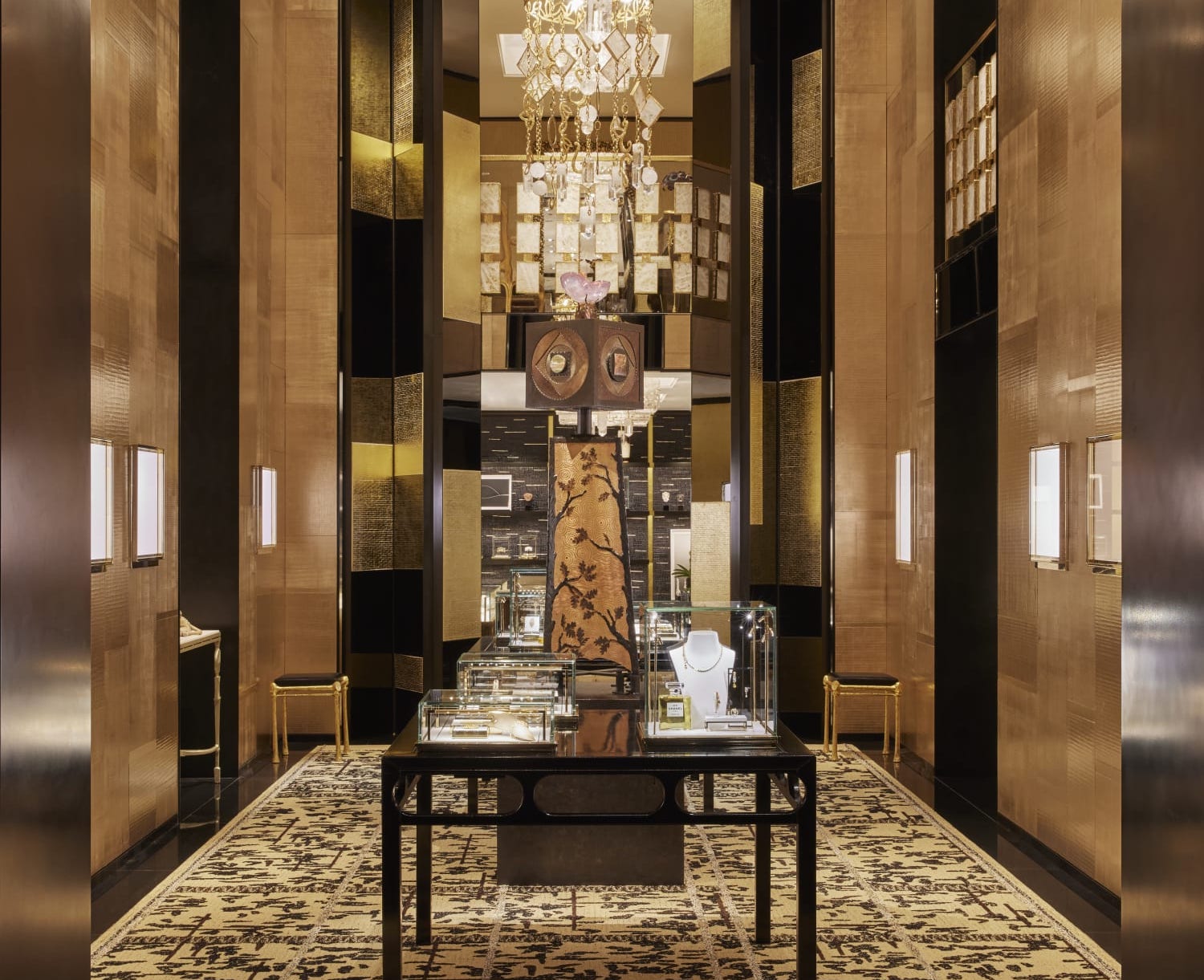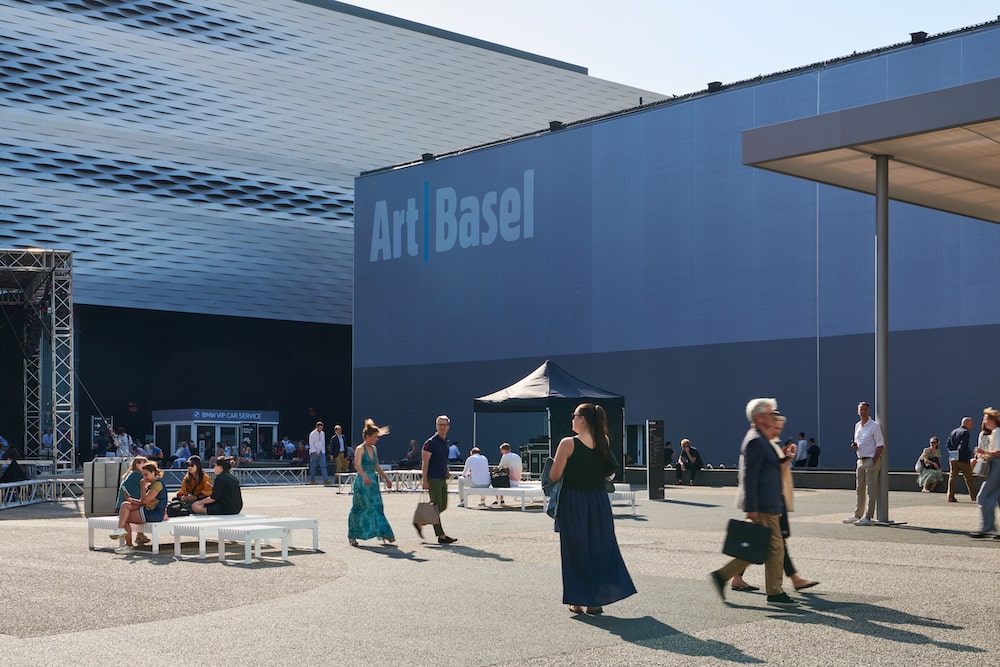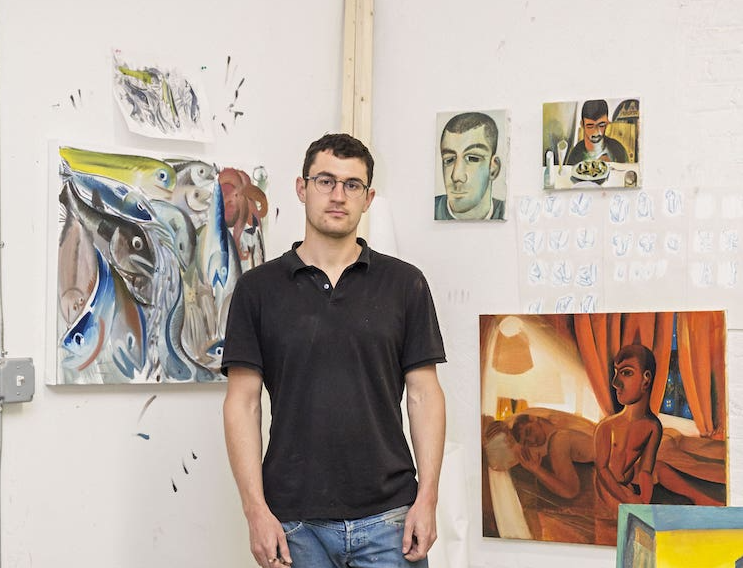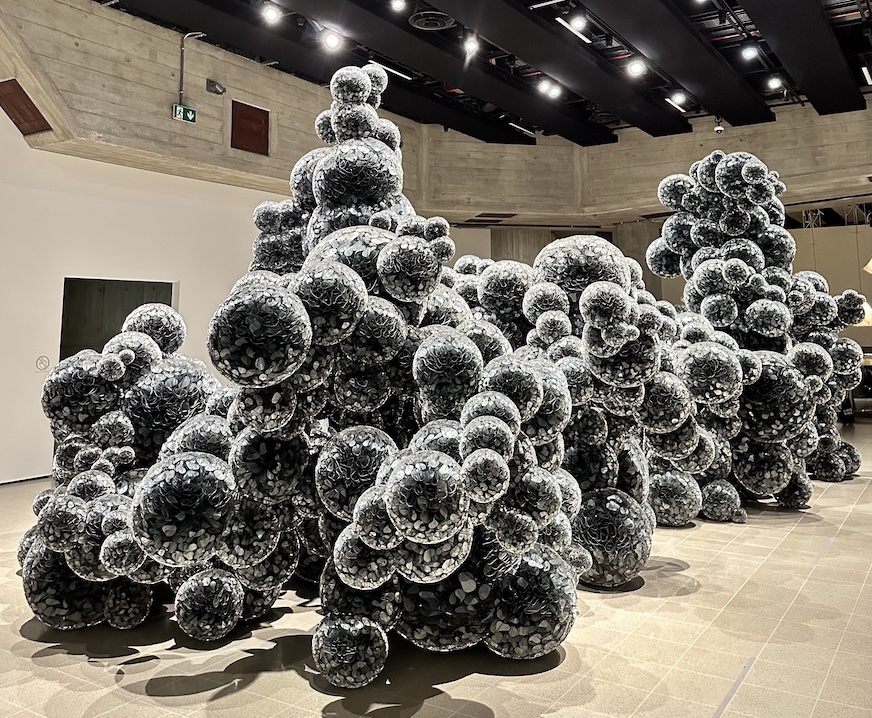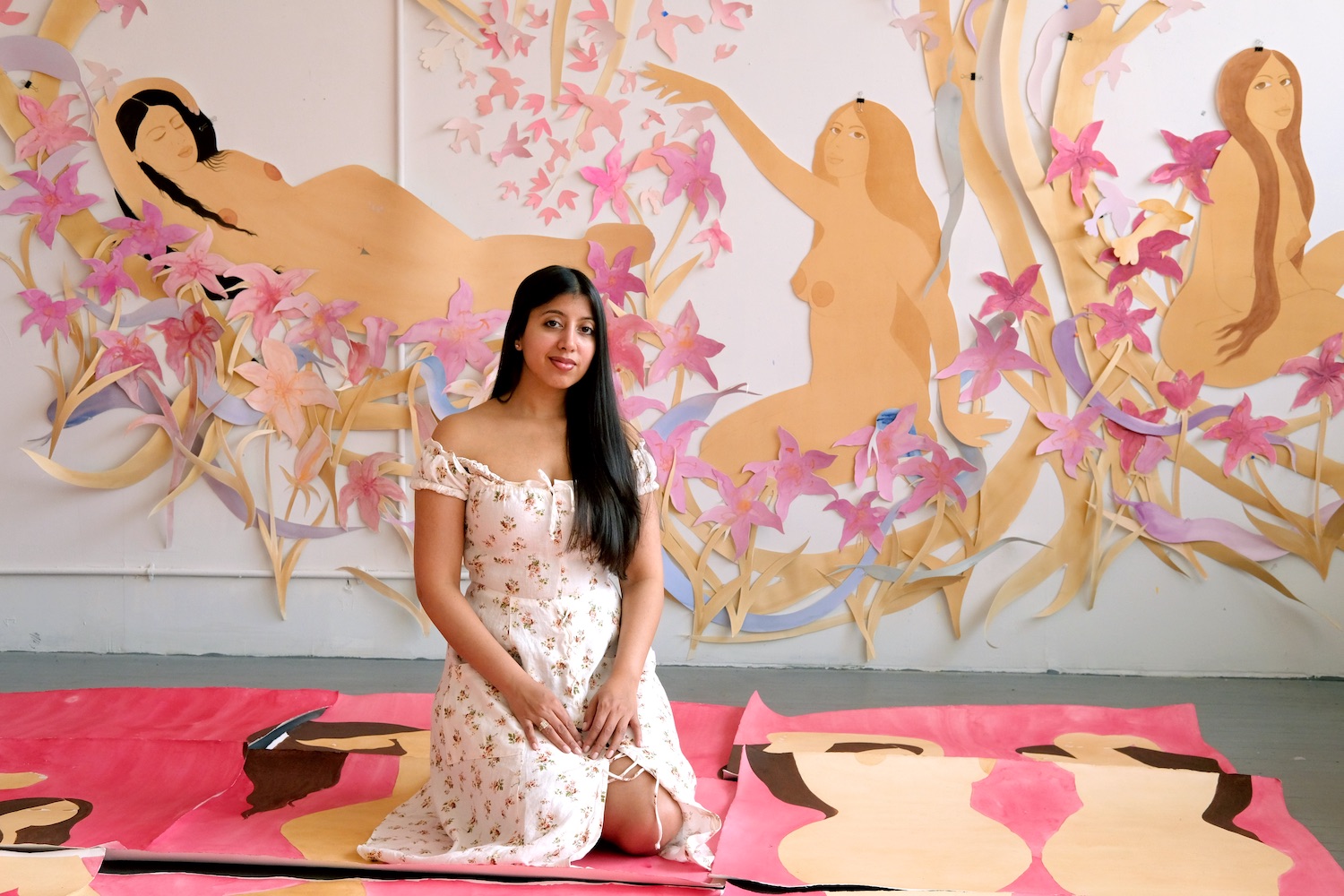The experience of the pandemic has been full of extremes for so many of us, and Patrick Eugène would not exclude himself from that description. The Atlanta-based artist described it as a moment of dichotomy, filled with enlightenment on one end and confusion on the other. Within that tumultuous yet fertile space, Eugène participated in a residency, Danny Dunson’s Legacy Brothers. His resulting new body of work, “Letters to an Artist: In Search of the Creative Self,” depicts imagined Black creative leaders and luminaries of movements like the Harlem Renaissance.
Ahead of his current exhibition at Gallery 1957 “Where Do We Go From Here?,” on view now through September 18, Whitewall spoke with Eugène about making the paintings that are currently on view in the Legacy Brothers inaugural Salon Series, as well as sourcing new inspiration from old film, photos, and books.
WHITEWALL: What was the starting point for “Letters to an Artist: In Search of the Creative Self”?
PATRICK EUGÈNE: I’ve always been enamored by the act of creation and the minds responsible for the art we enjoy daily. I do believe that I dug a little deeper into my studies of historical Black creators during the pandemic, as I, like most others, had more time to dive into my research. Throughout this same period of discovery, there were also times when I struggled to find my own inspiration to create. I believe the dichotomy of this moment of enlightenment and confusion led to this “Letter” being written.
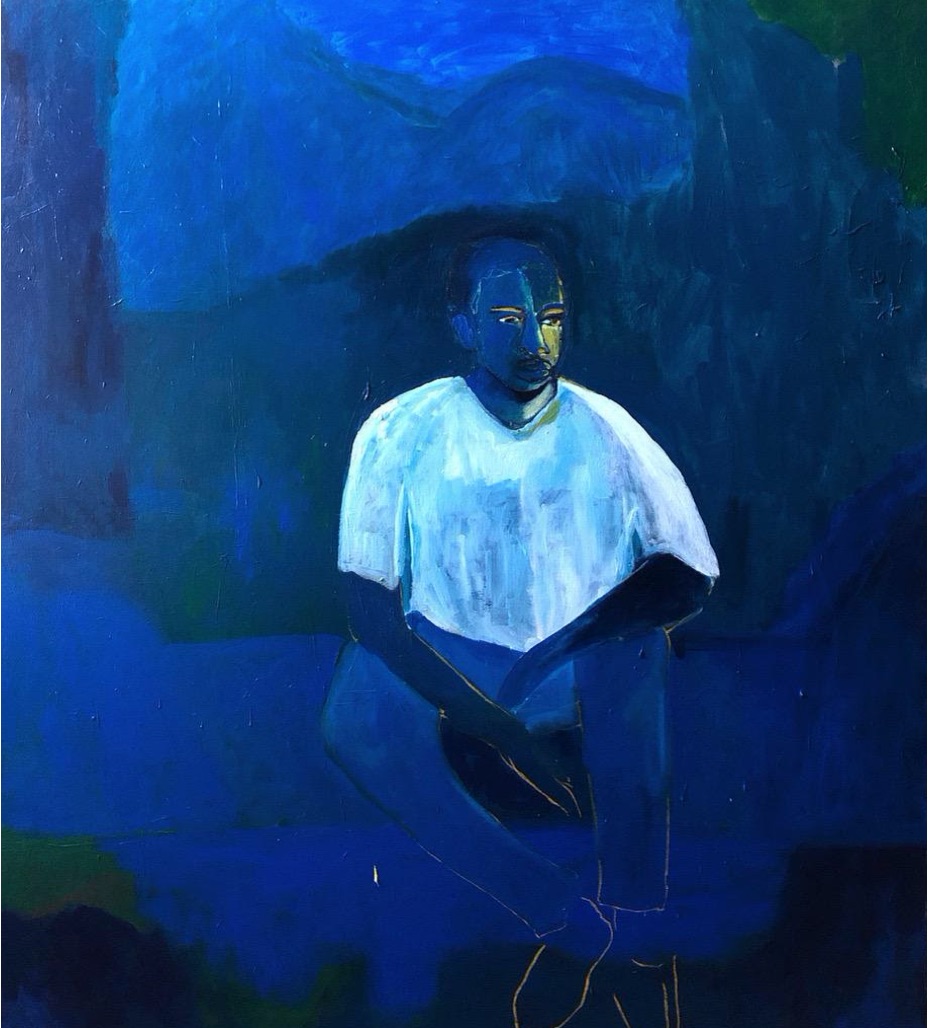 Patrick Eugène, “Cerulean Hue,” 2020, acrylic and oil on canvas, 60 x 72 inches, courtesy of the artist and Legacy Brothers, LLC.
Patrick Eugène, “Cerulean Hue,” 2020, acrylic and oil on canvas, 60 x 72 inches, courtesy of the artist and Legacy Brothers, LLC.
WW: The works on paper and paintings reimagine images of Black creative figures of the 20th century. How did you arrive at that inspiration?
PE: I don’t know if it’s an age thing or just a “me” thing, but the older I get, the more interested I become in a time period before my own. As we continue to dive deeper into technology, the more we shift into this virtual experience, the more I want to know about a world before the Internet. There’s just something extra authentic about the movements like the Harlem Renaissance and the Black Arts Movement of the seventies that I’m hoping to recapture in my own way. Because the figures in my work aren’t drawn directly from the likeness of any particular person, I try to reimagine the time period and take it from there.
WW: How do you see them in the light of the present day?
PE: I’m a strong believer that everything is cyclical. We all draw inspiration from historical figures, movements, and the work created in the past. I think 2020 put us in one of those “How did they live through that?” moments in history. The pandemic was our catastrophic event, but it was also an event which birthed an immense amount introspection and creativity. Similar to the many other periods in history, which have led to the art we celebrate today, the works created in this moment will have a true story to tell.
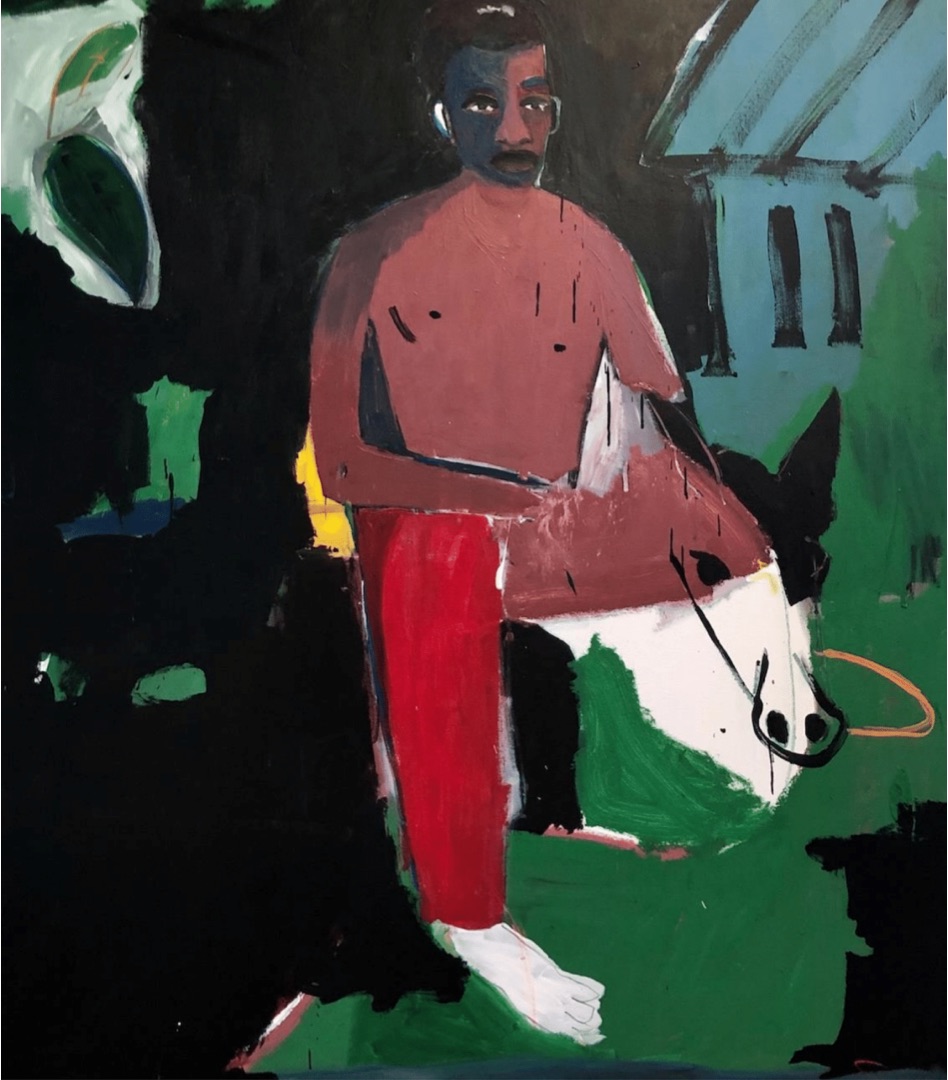 Patrick Eugène, “Maybe A Dream,” 2020, acrylic and oil on canvas, 60 x 72 inches, courtesy of the artist and Legacy Brothers, LLC.
Patrick Eugène, “Maybe A Dream,” 2020, acrylic and oil on canvas, 60 x 72 inches, courtesy of the artist and Legacy Brothers, LLC.
WW: The Salon Series follows your 2020–21 residency with Legacy Brothers. Can you tell us about your experience in the residency?
PE: The timing just couldn’t have been any better to take part in the residency. It was inspiring to be able to connect with amazing artists globally, spanning from Brazil to Nigeria. As we all were dealing with the same experiences of lockdown and searching to find inspiration, we were able to develop and challenge each other in ways that I think is necessary in the art community. Danny Dunson of Legacy Brothers dedicated his time and his knowledge of art history to pose various challenges and questions, allowing me to view my work from a different angle, which was for sure helpful. We capped it off with a group exhibition, “Gallery 1957 in Ghana,” obviously a great experience.
WW: What kind of impact did you see it have on your practice?
PE: Prior to the residency, my practice consisted of both figurative and abstraction. I think being amongst such strong figurative painters in the group, I was inspired to take a super focused approach to exploring my portrait style of work. I believe the work has developed quite a bit over the past year.
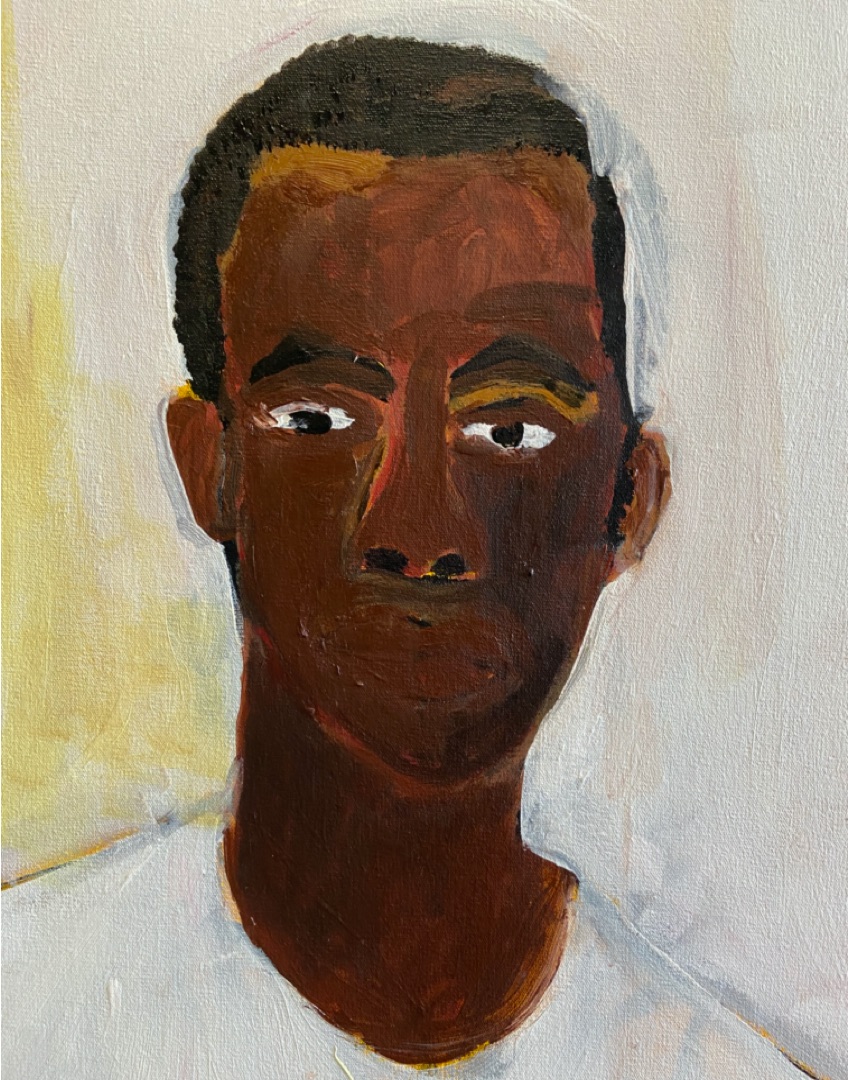 Patrick Eugène, “Maybe A Dream,” 2020, oil on canvas, 24 x 30 inches, courtesy of the artist and Legacy Brothers, LLC.
Patrick Eugène, “Maybe A Dream,” 2020, oil on canvas, 24 x 30 inches, courtesy of the artist and Legacy Brothers, LLC.
WW: Can you tell us about your studio space, and what a typical day is like for you there?
PE: It’s a second home. My wife, Harryele, and my son, Jaiden, help out with studio assistant duties. We hang out and make it happen as a family. My studio is located in a historical building built during the 1800s where machinery for cotton gins were built. There’s definitely a vibe going in the space—I’m sure it’s influenced my work in some way.
WW: Can you tell us about your show at Gallery 1957 this September, and the works that will be included?
PE: “Letters to an Artist” was a small capsule of works previewing a larger scale exhibition that will be part of the upcoming show with Gallery 1957. I have been working on this series for about a year now and looking forward to sharing.
WW: What are you working on at the moment? Where are you finding inspiration?
PE: Still inspired by, exploring, and creating works that highlight the Black creative/intellectual. Experimenting with various mediums and sourcing new inspiration from old films, books, and photos.
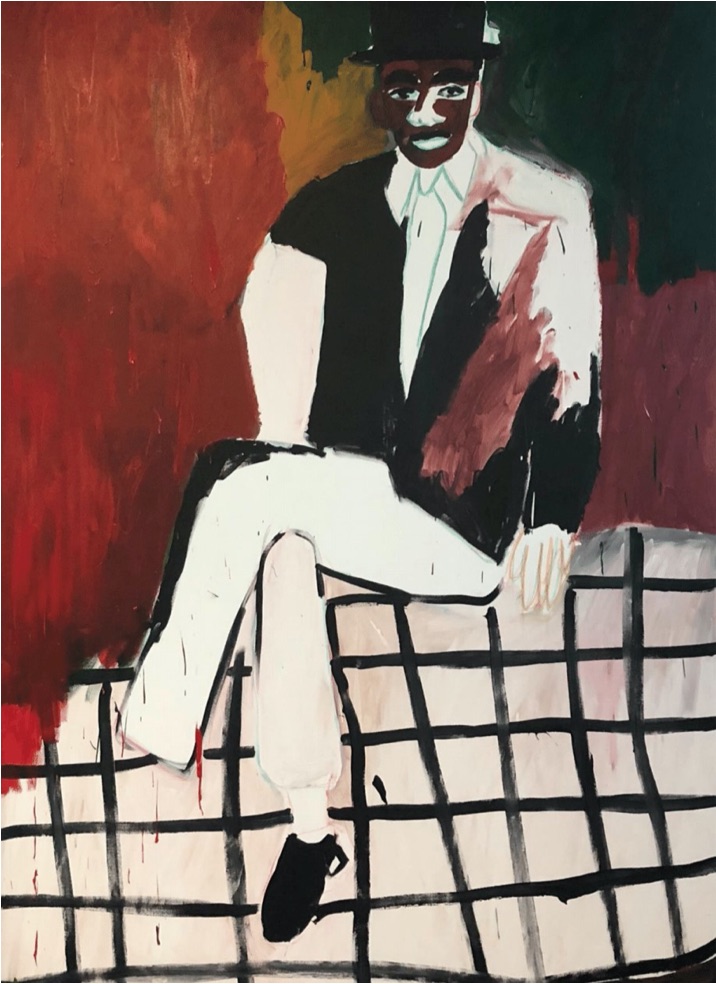 Patrick Eugène, “Untitled,” 2020, acrylic and oil on canvas, 72 x 108 inches, courtesy of
the artist and Legacy Brothers, LLC.
Patrick Eugène, “Untitled,” 2020, acrylic and oil on canvas, 72 x 108 inches, courtesy of
the artist and Legacy Brothers, LLC.
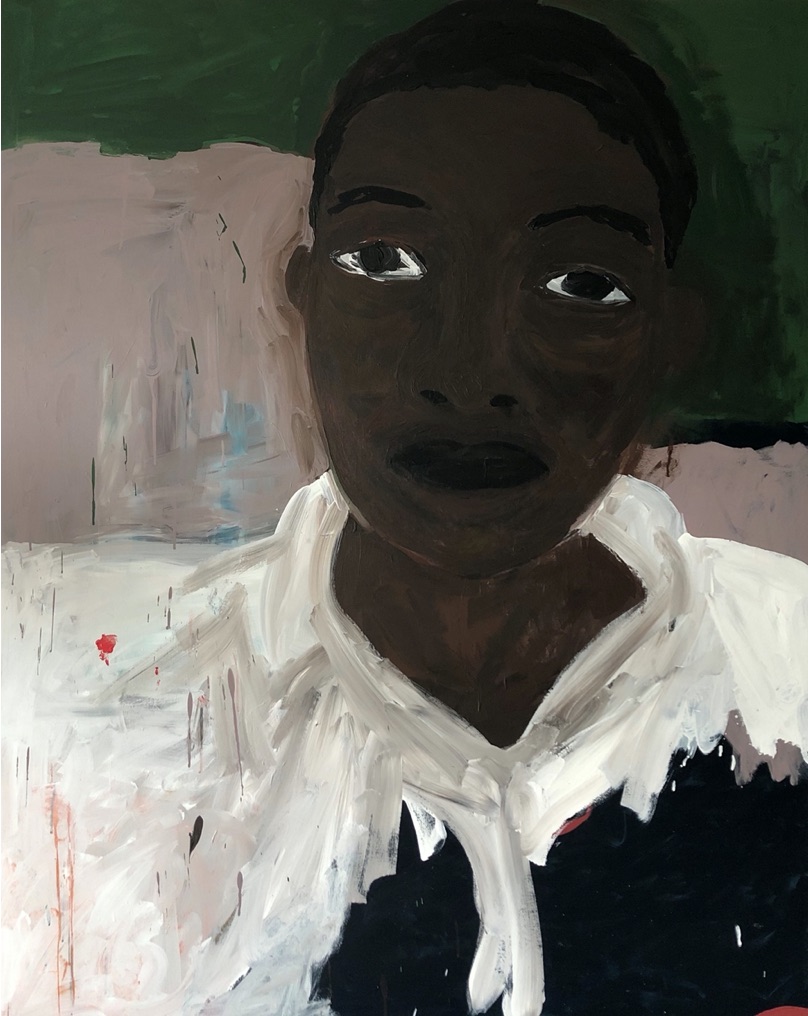 Patrick Eugène, “Untitled,” 2020, acrylic on canvas, 48 x 60 inches, courtesy of
the artist and Legacy Brothers, LLC.
Patrick Eugène, “Untitled,” 2020, acrylic on canvas, 48 x 60 inches, courtesy of
the artist and Legacy Brothers, LLC.

